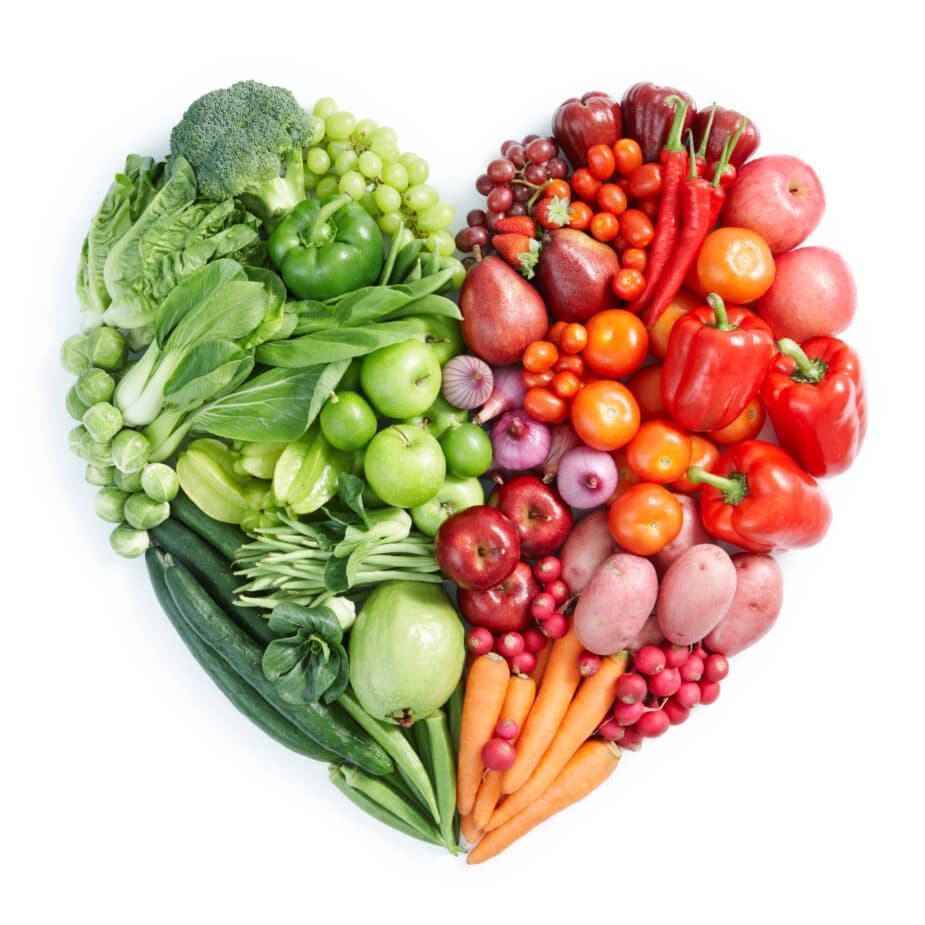This post is sponsored by the International Plant Sterols and Stanols Association (IPSSA). All opinions and thoughts expressed in this article are my own. I only promote products and services I believe will benefit my readers.
Cardiovascular disease (CVD) remains the leading cause of death in the U.S. and throughout the world. Elevated LDL-Cholesterol (bad cholesterol) levels are the primary risk factor for atherosclerosis, or plaque buildup, in our arteries, leading to CVD.
Lowering LDL cholesterol is one of the main recommendations to help reduce your risk of CVD. Research has suggested that even small reductions can make a difference with studies showing just a 1% reduction in LDL cholesterol levels can reduce your risk for CVD by 1%.
So, what causes your LDL-cholesterol level to rise in the first place? The American Heart Association suggests that our diets and lifestyles are two of the main culprits.
The good news? Building healthy habits which includes eating more fruits and vegetables, whole grains, seafood, and healthy fats can help reduce your risk.
This is where plant sterols and stanols come in. These nutrients are found naturally in vegetable oils, whole grains, nuts, and seeds as well as fruits and vegetables. Some foods may also be fortified with them.
Plant sterols and stanols are recommended by many major health organizations globally. They, along with cholesterol-lowering medication and lifestyle changes can help reduce the risk of CVD.
But let’s back up – what exactly are plant sterols and stanols?
What Are Plant Sterols and Stanols?

Plant sterols and stanols are natural compounds found in plant foods. They are similar in structure to cholesterol and help block its absorption. You might also hear them called phytosterols.
Research shows they can help reduce the risk of CVD, as well as provide other health benefits including reducing triglyceride levels and improving insulin resistance.
Due to their positive effects on cholesterol levels, a variety of foods in Europe have been fortified with plant sterols and stanols for years. While it is less common in the U.S. you can find them added to a few food products and supplements.
They mix best with oil-based food products, so you will most likely find them in margarine, salad dressings, and spreads. They are best absorbed and provide the largest benefit when combined with other foods and eaten as part of a meal.
How Do Plant Sterols and Stanols Lower Cholesterol?
Because plant stanols and sterols have a similar structure to cholesterol they can block the absorption of dietary cholesterol in your digestive tract. Less cholesterol from food is absorbed to find its way into your bloodstream.
Instead of building up in your arteries, some cholesterol moves through your digestive system and leaves as waste, helping to lower your cholesterol levels.
Studies have shown that consuming 1.5 – 3 g/day of plant sterols and stanols helps to lower LDL-cholesterol by 7 to 12.5% in just 2 – 3 weeks.
Over 140 clinical studies support the effectiveness of plant sterols and stanols in reducing cholesterol and their safety for most healthy adults. Most health agencies throughout the world recommend including them as part of a healthy diet to help lower high cholesterol levels.
The American Heart Association, World Health Organization, Health Canada, and the European Food Safety Authority are some of the most well-known organizations that support the use of plant sterols and stanols as part of a cholesterol-lowering plan.
In the U.S., the Food and Drug Administration feels there is enough evidence to support their effectiveness that they approved a health claim stating that plant sterols can reduce the risk of heart disease when consumed as part of a healthy diet that is low in saturated fat and cholesterol.
What Is the Daily Recommended Intake of Plant Sterols and Stanols?
While as little as 1 gram of plant sterols and stanols a day can be effective at reducing LDL cholesterol, up to 3 – 4 g per day is even more effective.
It’s reasonable that most of us can get between 200 – 400mg per day from natural food sources. People who follow a vegetarian or plant-based lifestyle may consume double that amount. Even still, this leaves a big gap between what you can reasonably eat in a day and what is recommended to have any effect on reducing cholesterol levels.
This is where adding foods that are fortified with them becomes important. A tablespoon of fortified spread 2 -3 times a day, every day, can help fill that gap and get you closer to the amount needed to lower high LDL-cholesterol levels.
How To Get Plant Sterols and Stanols?
Since these compounds are found in many plant foods following a Mediterranean or DASH diet is a good place to start. Focus on eating a variety of:
- Fruits
- Vegetables
- Whole grains
- Legumes
- Nuts and seeds
- Vegetable oils
Eating a balanced and healthy diet will help increase your intake of these nutrients naturally. Still to get the amount needed to reduce cholesterol, adding fortified foods to your routine will be necessary.
Foods that are fortified with plant sterols and stanols are kind of a “European secret.” In Europe, a variety of foods are fortified with them including spreads, yogurt, and milk.
Health professionals in Europe also frequently recommended them as natural ways to help manage cholesterol levels and as a complement to cholesterol-lowering medications and other lifestyle changes.
Plant sterols and stanols are not as commonly recommended in the U.S. but you can find them added to a variety of spreads, margarine, snack bars, as well as dietary supplements. Look for foods that have “phytosterols added” on the label.
Bottomline
Adding plant sterols and stanols to a healthy diet is one more tool in your toolbox if you have high cholesterol levels. While they are found naturally in a variety of plant foods, it is difficult to get enough from natural food sources alone.
Adding foods that are fortified with plant sterols and stanols to your meals is a good way to complement other lifestyle changes. They also work in concert with cholesterol-lowering medications prescribed by your healthcare provider.
Keep in mind, while I am a registered dietitian, I’m not your dietitian so make sure you talk with your provider if you are taking a cholesterol-lowering medication to see if adding a plant sterol or stanol might be a good option for you.
Cheers to just one more simple thing you can do to help live a vibrant and active lifestyle as you age!










2 thoughts on “Lower Your Cholesterol Naturally: The Benefits of Plant Sterols and Stanols”
Thank you for providing such a comprehensive and practical guide. Your blog has become a valuable resource for me, and I’m sure it will help many others on their journey to better manage high cholesterol. Looking forward to more insightful content from you.
I’m so glad you found this to be helpful! Thanks for reading and commenting! 🙂